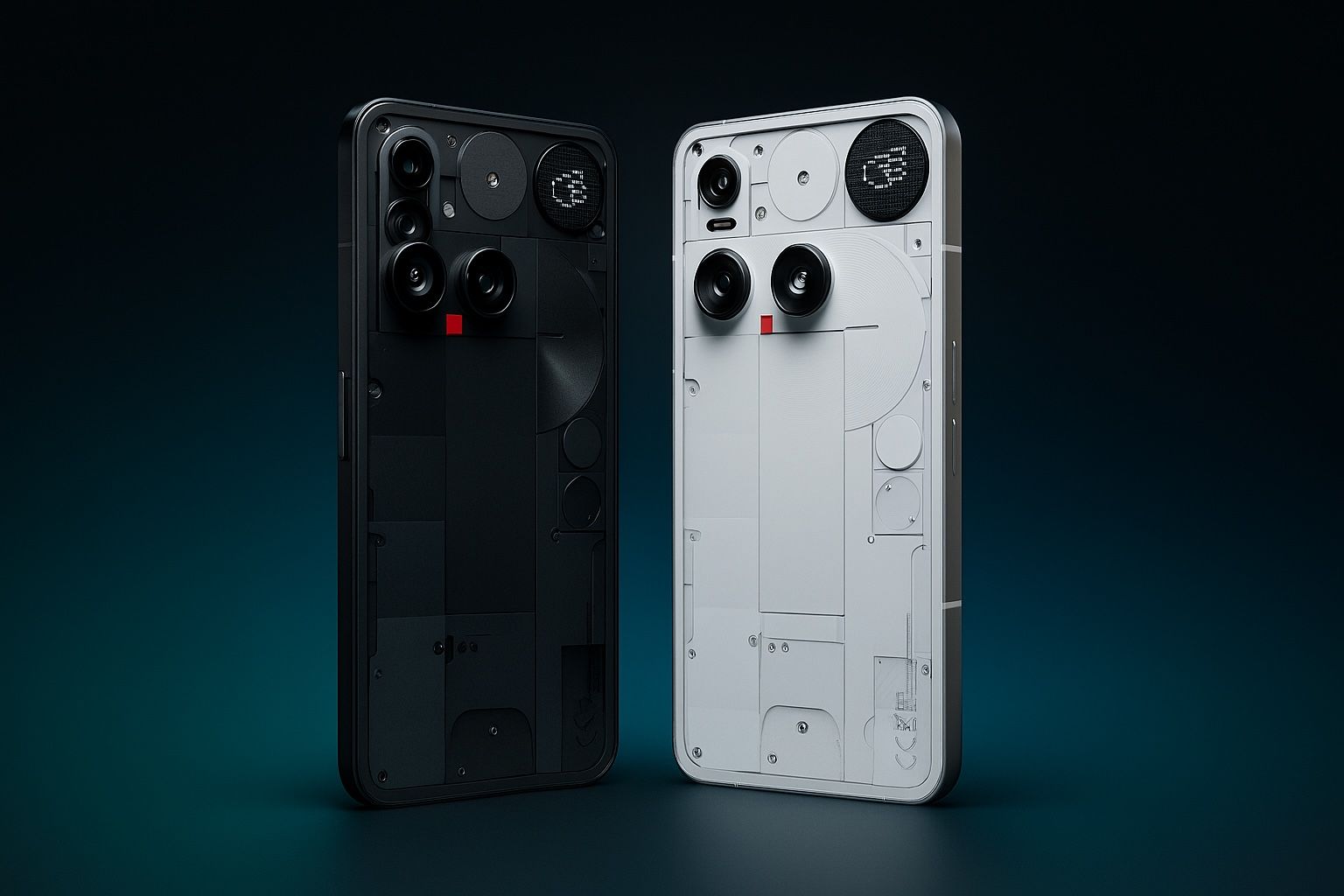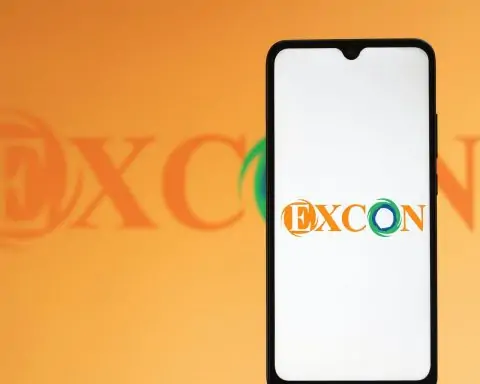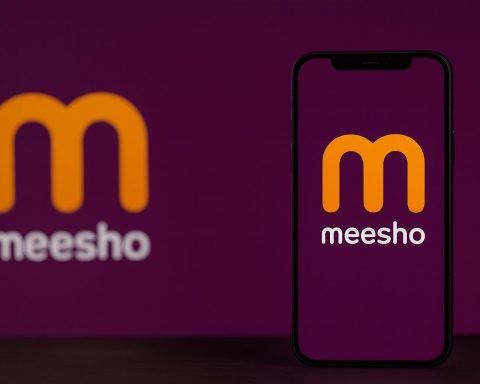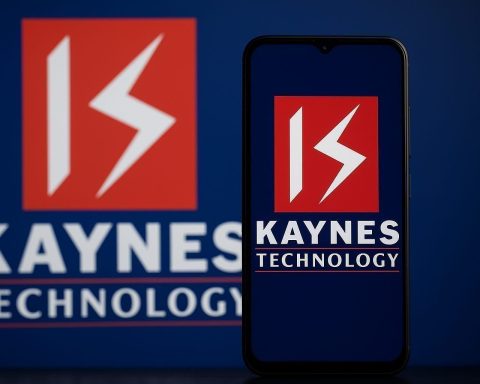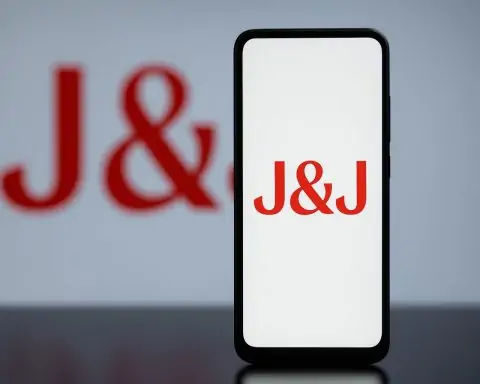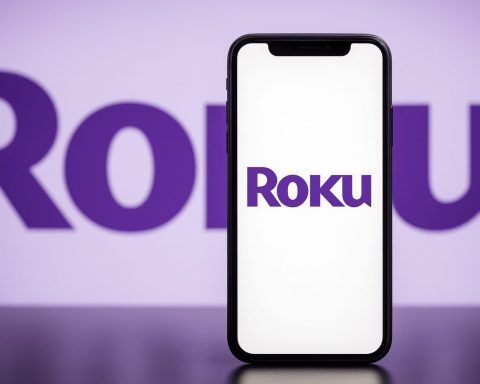- The Nothing Phone 3 was officially unveiled on July 1, 2025, with pre-orders opening July 4 and a full market release on July 15, 2025.
- Prices start at $799 for 12GB RAM/256GB storage and $899 for 16GB RAM/512GB, with India pricing ₹79,999 and ₹89,999.
- The 6.67-inch flat AMOLED display offers 1260×2800 resolution (460 ppi), 20:9 aspect, adaptive 120Hz refresh, 1000Hz touch sampling, and up to 4500 nits peak brightness.
- Power comes from a Snapdragon 8s Gen 4 (4nm) with claimed gains of 36% CPU, 88% GPU, and 60% NPU vs Phone 2.
- Memory and storage options are 12GB/256GB and 16GB/512GB using UFS 4.0, with no microSD expansion and no 1TB option.
- The quad-camera system uses four 50MP sensors: main 50MP 1/1.3″ f/1.68 with OIS, ultrawide 50MP with 114° FoV, a 50MP periscope telephoto with 3x optical zoom and up to 60x AI zoom, and a 50MP front camera.
- The Glyph Matrix back display replaces the old Glyph interface, enabling icon animations and even a viewfinder for selfies, plus a red recording LED.
- The Phone 3 houses a ~5150 mAh battery, supports 65W wired charging (about 55 minutes to full) and 15W wireless charging, with claimed 80% battery health after 1400 full cycles.
- Nothing OS 3.5 on Android 15 adds AI features like Essential Search and Flip to Record, and Nothing promises 5 years of major Android updates and 7 years of security patches, with Android 16 via Nothing OS 4.0 planned for Q3 2025.
- It is positioned as a flagship challenger with IP68, aluminum frame, transparent back, 160.6×75.6×9 mm, 218 g, two color options (White and Black with transparent backs), and availability in the UK, Europe, US, and India via Amazon and Nothing’s site, with no 128GB variant.
Overview – A “True Flagship” That Breaks the Mold
The Nothing Phone (3) is Carl Pei’s boldest smartphone yet, billed as the startup’s “first true flagship smartphone” with “premium materials, major performance upgrades, and software that really levels things up” [1]. After months of rumors and teasers, Nothing officially unveiled the Phone 3 on July 1, 2025 (6PM BST/1PM ET) in a livestreamed event [2]. It marks a leap from the mid-range ethos of its predecessors – the Phone (1) (2021) and Phone (2) (2023) – into bona fide high-end territory. In fact, the Phone 3 now sits above the mid-range Phone 3a and 3a Pro models launched earlier in 2025, serving as “the ultimate showcase of the company’s vision” [3].
Nothing took an extra year to polish the Phone 3, even delaying its release from 2024 to 2025 so the team could integrate advanced AI features into the device [4]. The result is a handset that dares to be different in a sea of lookalike smartphones. From its quirky transparent design and brand-new Glyph Matrix lighting to a quad-camera setup of four 50MP sensors, the Phone 3 is loaded with head-turning features. Below, we break down everything known – confirmed specs, key features, pricing and availability – and see how the Phone 3 stacks up against mid-range rivals like Google’s Pixel 8a, Samsung’s Galaxy A series, and Apple’s anticipated iPhone SE 4.
Release Date and Availability
Mark your calendars: The Nothing Phone 3 was officially unveiled on July 1, 2025 [5], right at the start of Q3 as earlier hinted [6]. Pre-orders opened on July 4, and the full market release followed on July 15, 2025 [7]. This launch timing fits Nothing’s roughly two-year flagship cadence – Phone (1) debuted July 2021, Phone (2) in July 2023, and now Phone (3) in mid-2025 [8].
Global availability is broader than ever. Carl Pei has confirmed the Phone 3 will be sold in the UK and Europe, and for the first time it gets “proper” United States availability at launch [9]. Unlike previous models (which required limited beta programs or lacked full network support in the US), the Phone 3 supports major U.S. carriers (with 4G/5G for AT&T and T-Mobile) and will be purchasable through Amazon and Nothing’s own site [10]. India is also a key market – Nothing held a parallel launch and the phone will hit Indian retailers (Flipkart, Croma, etc.) on July 15 after pre-bookings from July 1 [11] [12].
Pricing and Models
Nothing is nudging into premium pricing with the Phone 3. The device comes in two configurations: 12GB RAM + 256GB storage for $799 (base model) and 16GB + 512GB for $899 [13]. Pei had hinted at a roughly £800 price in the UK, putting it in the same class as base-model iPhones and Galaxies [14] – and indeed £799/€799 is the starting price in Europe [15]. This is a significant jump from the Phone (2)’s launch ($599 for 8/128GB) and reflects the Phone 3’s move toward “flagship” components and capabilities [16]. (For context, the Phone 2’s top configuration 12/256GB also cost $799, so Nothing has effectively shifted the baseline upward while doubling storage.)
In India, where Nothing built a strong fanbase with its first phones, the Phone 3’s pricing lands at ₹79,999 for 12/256GB and ₹89,999 for 16/512GB [17]. That roughly converts to $950–$1070, a steep rise compared to the Phone 2’s ₹44,999 launch price for 8/128GB [18]. Bank offers and launch promotions may soften those figures (Nothing bundled free Ear (2) earbuds for early Indian pre-orders) [19], but there’s no denying the Phone 3 is no longer a “budget flagship”. It’s priced head-to-head with true flagships – and Nothing openly acknowledges this is “the company’s first true iPhone and Galaxy S rival – with a price to match” [20].
There are no cheaper variants with less RAM or storage, and no 128GB option at all [21]. Nothing seems confident that 256GB is the new baseline for its users’ needs [22]. Also notable is the absence of expandable storage – like most premium phones, the Phone 3 has no microSD slot [23]. Buyers will have to choose a model up front that fits their storage needs.
Design and the New Glyph Matrix
One look at the Phone 3 and it’s clear Nothing is doubling down on striking design. The company’s mission to “make tech fun again” through distinctive hardware is on full display [24]. The Phone 3 retains the transparent back aesthetic that turned heads on prior models, but the design language has evolved with even more quirky, sci-fi flair.
The most talked-about change is the Glyph Interface – or rather, its transformation. Nothing cheekily teased “we killed the Glyph interface” in May [25] [26], signaling the end of the old pattern of light-up LED strips on the rear. In its place, the Phone 3 introduces the Glyph Matrix, a “micro-LED display” embedded in the back of the phone [27]. This isn’t a full e-ink or LCD panel, but rather a dot-matrix grid of tiny white LEDs clustered in the top corner of the back cover [28]. The matrix can illuminate to show various icons, patterns, and even basic images – effectively turning notifications and status indicators into pixel-art animations. Nothing’s teasers full of dot-matrix imagery (and the tagline “Come to Play”) hinted at this playful new approach [29] [30].
In practical terms, the Glyph Matrix can convey more information than the old static light bars. For example, it can reportedly display custom symbols for caller ID, notification icons, progress bars for downloads or timers, and mini widgets like a clock or battery meter [31] [32]. A small red LED on the back also lights up as a tally light when recording video with the rear cameras [33]. Nothing is even launching a public SDK for the Glyph Matrix, inviting developers to create app-specific light patterns and personalized icons for contacts [34]. In short, the Phone 3’s rear lights are no longer just neat visual flair – they form a tiny secondary interface.
Beyond the Glyph Matrix, the overall design is delightfully unconventional. The transparent back still exposes elements like the wireless charging coil (half-visible under a tinted cover) and other components [35], but the layout is completely revamped. The camera module is arranged in a quirky, asymmetrical fashion: two of the rear cameras sit inside opaque square housings, while the third camera is set separately in a diagonal oval cutout at the upper corner [36]. Next to that is a large circular window – which isn’t a camera at all, but the Glyph Matrix display. Meanwhile, the LED flash is centered above, resembling a “cyclops eye” peering out of the back [37]. This abstract, geometric layout is polarizing; TechRadar notes it gives an “abstract, asymmetrical vibe” that some might find “the most controversial aspect” of the design, though their editor admitted to “personally being a big fan” of how unique it is [38].
Nothing has also emphasized premium build materials to justify the higher price [39]. The Phone 3 features an aluminum frame (with a refined curvature at the corners, referred to as an improved “R-angle shape” in the spec sheet) [40]. The front and back are Gorilla Glass (exact version unspecified, but likely Victus or better) for durability [41]. The device is IP68 rated for water and dust resistance [42] – a first for Nothing phones, and essential for a true high-end phone. Color options at launch are the classics: White and Black (both with transparent backs) [43]. Despite all the tech inside, the Phone 3 maintains a sleek profile: about 160.6×75.6×9mm and 218g according to one review [44], on par with many 6.7-inch devices.
Overall, the Phone 3’s design screams that it’s not just another slab. “Are modern smartphone designs boring? Nothing is the exception,” writes TechRadar, noting the Phone 3 “fulfils [Nothing’s] brief and then some” in standing out [45]. It’s a risky move to ditch the familiar Glyph lights, but by replacing them with a retro-cool pixel display and bold camera styling, Nothing certainly accomplished its goal to “make tech cool (and fun) again.”
Display – Big, Bright, and Bezel-less
Flip the phone around, and you’re greeted by a gorgeous 6.67-inch AMOLED display that firmly plants the Phone 3 in phablet territory. This screen uses a flexible OLED panel that enables extremely slim bezels – only 1.87mm borders all around, which is about 18% thinner than the already-sleek bezels on Phone (2) [46]. The result is an almost all-screen front with a ~93% screen-to-body ratio [47], uninterrupted except for a tiny hole-punch front camera.
The resolution is a sharp “1.5K” – specifically 1260 × 2800 pixels (~460 ppi) for a slightly taller 20:9 aspect ratio [48]. This lands between standard 1080p and QHD, balancing clarity and battery efficiency. Importantly, Nothing didn’t skimp on refresh rate: it’s an adaptive 120Hz panel, ensuring smooth scrolling and animations. Touch sampling is an ultra-fast 1000Hz, which hardcore gamers might appreciate for its responsiveness [49].
Where the Phone 3’s display truly astonishes is brightness. It can reportedly reach a peak brightness of 4,500 nits for HDR content [50] – an extremely high number that would make it one of the brightest smartphone screens on the market. (For comparison, the latest Galaxy S and iPhone flagships typically peak around 2,000–2,500 nits.) Even in typical outdoor use, the Phone 3 can sustain up to 1,600 nits in high-brightness mode [51], meaning visibility in sunlight should be excellent. HDR video, games, and other content will have no trouble popping on this panel – though a current quirk is that some apps haven’t whitelisted the device for HDR yet, limiting playback to SDR until certification catches up [52].
The screen is flat (no curved edges), which many users prefer for usability. It supports HDR10+ and has high-frequency PWM dimming (2160Hz) to reduce flicker at low brightness [53], indicating an eye-friendly design. All in all, Nothing appears to have equipped the Phone 3 with a truly flagship-grade display, suitable for everything from Netflix binging to VR gaming. The near-bezelless design also complements the flashy back – on either side, this phone is built to impress visually.
Hardware and Performance
At the heart of the Nothing Phone 3 beats a Qualcomm Snapdragon 8s Gen 4 chip – an unusual choice that has sparked much discussion. This is a brand-new 4nm SoC (System on Chip) that slots just below Qualcomm’s top-tier “8 Elite” flagship processor [54] [55]. In essence, the 8s Gen 4 is a slightly scaled-back version of the latest Snapdragon 8-series powerhouse. Carl Pei confirmed this chipset in an official interview, touting that the Phone 3 will be “36% faster on CPU, 88% stronger on GPU, and 60% stronger on the NPU” than the Phone 2 (which used a Snapdragon 8+ Gen 1) [56]. Those are hefty generation-over-generation gains, meaning the Phone 3 should feel significantly snappier and more capable than its predecessor.
Benchmarks aside, early hands-on reports suggest the 8s Gen 4 delivers flagship-like speed in daily use. Apps launch instantly, the UI is fluid, and even demanding 3D games run well [57]. In a brief test at the launch event, TechRadar’s editor said he was “convinced the 8s Gen 4 will be speedy enough” for all of Nothing’s software features and multitasking needs [58]. That said, this chip isn’t Qualcomm’s absolute fastest. If you’re the type of power user who maxes out graphics settings or renders 8K videos on your phone, the Phone 3 won’t top the benchmark charts. TechRadar notes that by skipping the true flagship 8 Elite chip, the Phone 3 will likely “lag behind the Galaxy S25 Ultra and OnePlus 13 in push-your-phone-to-the-limits use cases” [59]. Under extreme load (like prolonged gaming or stress tests), the Phone 3 can run quite hot and eventually throttle, as one review pointed out [60]. But Nothing’s bet is that for the vast majority of users, the 8s Gen4 is more than powerful enough – and it likely helps with battery life and cost balance. “Nothing is not, and never will be, a brand for [spec-obsessed] power users,” one commentator observed, suggesting the focus is on “making tech cool” and smooth for everyday tasks [61] [62] rather than chasing the highest FPS in 3D games.
Memory-wise, the Phone 3 is generous: 12GB RAM on the base model and 16GB on the higher model [63]. This ample RAM means heavy multitasking and future OS versions should be handled with ease. Storage is UFS 4.0 and comes in 256GB or 512GB flavors (as noted, no expandability) [64]. There’s no mention of a 1TB option – Nothing seems to feel 512GB is the max most enthusiasts need [65].
In terms of connectivity and other hardware features, the Phone 3 checks all the boxes for a 2025 flagship: 5G (with dual SIM or eSIM support), Wi-Fi 7 compatibility (for cutting-edge wireless speeds), Bluetooth 6 (the latest standard for audio and accessories) and NFC for payments [66]. It also boasts stereo speakers and an optical under-display fingerprint scanner, which The Guardian found “fast and pretty accurate” (albeit placed a bit low on the screen) [67]. The phone retains wireless charging capability and likely reverse wireless charging (to top up earbuds) given the previous model had it.
A noteworthy addition is a physical “Essential Key” – a customizable side button introduced earlier on the Phone 3a Pro [68]. This key (just below the power button) can be mapped to launch Nothing’s special “Essential” apps or other shortcuts. It ties into the phone’s emphasis on AI and productivity, which we’ll explore next.
Bottom line: the Nothing Phone 3’s hardware is distinctly high-end, if not absolutely bleeding-edge. It may not win a specs arms race against $1,200 ultra-phones, but at $799 it delivers a level of performance and tech that firmly puts it in flagship conversation. As Nothing’s team put it, the goal was a phone that “isn’t noticeably slower or buggier than the best phones on the market” [69] – meaning you get 90% of a 2025 flagship’s power in a device that dares to be a lot more fun.
Software and AI Features (Nothing OS 3.5)
Running the show is Nothing OS 3.5, a custom interface atop Android 15 [70]. Nothing’s software philosophy has always been “smooth, minimal, and a little bit different”, and Phone 3 continues that trend. The UI has a distinctive monochrome, dot-matrix aesthetic – from the font to the icons and animations – to complement the phone’s retro-futuristic vibe [71]. Even the ringtones and notification sounds carry a quirky, “8-bit” character. (Of course, users can switch to more traditional icon styles or color themes if they prefer a standard Android look [72].)
One of the biggest new pushes with Phone 3’s software is AI-powered features. Nothing has been talking up AI integration since early in development, and even delayed the launch to incorporate more advanced AI capabilities [73]. So what does that mean for the user? Primarily, it’s about the “Essential” suite – a set of smart tools designed to streamline tasks and “learn from you” in daily use [74].
Firstly, there’s Essential Search, a universal search bar with AI smarts. This isn’t just for finding apps or contacts; it can search within your content (messages, notes, files) and even answer simple queries by pulling relevant info from your data [75]. Think of it as an on-device assistant that indexes everything for quick retrieval – similar to iOS Spotlight or Windows Search, but juiced up with AI to interpret natural language requests.
Then there’s Essential Space, which is Nothing’s AI-organized hub for notes, recordings, and “captures” of information. The marquee feature here – debuting on Phone 3 – is “Flip to Record.” As the name suggests, if you flip the Phone 3 face-down on a table, it will automatically start recording the conversation and transcribing it in real time [76]. The Glyph Matrix on the back even shows a fun waveform animation as it listens [77]. This is a powerful tool for meetings or interviews: you essentially have a hands-free voice recorder that generates an AI summary of the discussion in Essential Space, without needing to stare at the screen. The Guardian notes you can do this “while face down with an animation on the glyph screen and transcription using a cloud service”, and then the AI can summarize or organize those notes for you [78]. It’s like a smart notetaker at your service.
Essential Space also consolidates screenshots, web links, and other tidbits you collect, attempting to “understand and summarize them” using AI [79]. Early feedback suggests it works, though with “varying degrees of success” in how useful those AI summaries are [80]. Still, it’s an ambitious step toward integrating AI into personal productivity on a phone. Nothing is effectively leveraging Google’s latest AI features (code-named “Gemini”) in Android [81] while adding its own twist on the UX.
Another perk: despite launching on Android 15 (the newest version as of mid-2025), Nothing is committing to long-term software support. Co-founder Akis Evangelidis promised the Phone 3 will get 5 years of major Android OS updates and 7 years of security patches [82]. That means it should see Android 16, 17, 18, 19, and 20 down the line – an industry-leading policy matched only by a couple of manufacturers. (It does slightly trail the likes of Google and Samsung in one aspect: Google’s Pixel 8 series, for example, offers 7 years of security too and potentially 5 years of OS upgrades, and Samsung often promises 4 OS updates on flagships [83]. But Nothing is right up in that top tier of support, a great sign for longevity.) The one criticism here is that the Phone 3 did not ship with Android 16, even though Android 16’s release is only a few months away – it launches on Android 15 (2024’s version) due to the timing [84] [85]. However, Nothing says Nothing OS 4.0 (based on Android 16) will land by Q3 2025 [86], and the company has been reasonably swift with past updates.
Out of the box, you’ll also find the usual Google apps and services (Play Store, Maps, etc.) alongside a few bespoke Nothing apps like weather, voice recorder, and camera. These are lightly customized with the dot-matrix styling but otherwise clean and bloat-free [87]. Nothing doesn’t overload you with duplicate apps or heavy skins – one reason fans appreciate their approach.
In summary, Nothing Phone 3’s software aims to deliver the “best of Android in a package which feels completely different,” as Carl Pei puts it [88]. It’s fresh and visually unique without straying so far as to confuse users. More importantly, the baked-in AI features like Essential Search and Flip to Record show Nothing trying to rethink how a smartphone can make daily life easier. While these AI tricks aren’t magic, they underscore Nothing’s philosophy that a phone should be smart in an unobtrusive, helpful way – not just jam-packed with specs. If these features evolve (and if third-party developers take advantage of that Glyph SDK and other hooks), the Phone 3’s software experience could truly set it apart from generic Android skins.
Camera System – Four 50MP Eyes
Nothing is making a statement with the Phone 3’s camera array: it’s the most advanced setup the company has ever produced, and arguably one of the most ambitious in any smartphone this year. In total, the Phone 3 packs four 50-megapixel cameras – three on the rear and one on the front [89]. This quad-50MP approach is a rarity (most phones use different resolutions for different lenses); Nothing’s aim is to ensure every camera, even the selfie, can capture high-detail images and 4K video.
On the back, the primary camera is a 50MP sensor with a large 1/1.3-inch size, combined with an f/1.68 aperture lens [90]. This main shooter is expected to perform great in most conditions, gathering plenty of light. Early reviewers indeed found the main cam produces “detailed, solid images” in good light [91], on par with other flagship phones. It has optical image stabilization (OIS) and can record video up to 4K at 60fps with stabilization [92] – and notably, so can all the other cameras. Nothing touts 4K/60 video on every lens with full OIS support, which is a fantastic spec for creators [93].
The second rear camera is a 50MP ultrawide with a 114° field of view [94] (roughly a 0.6x wide-angle). This lets you capture expansive scenes. It does not seem to have autofocus (so likely no dedicated macro mode via ultrawide, since macro is handled differently here). Image quality from the ultrawide is decent but a step behind the main – one review noted ultrawide shots look good at fit-to-screen size but “lack detail when zoomed in and show warping at the edges,” which is fairly common for ultrawides [95].
The star of the show is arguably the new 50MP periscope telephoto camera. This lens offers 3× optical zoom (around 70mm focal length equivalent) for closer shots without quality loss [96]. Using a periscope design (where the lens elements are arranged sideways in the phone with a mirror), Nothing managed to include true optical zoom in a mid-sized handset – a feature usually reserved for top-tier flagships. This camera opens up to up to 60× “AI zoom” digitally [97], although quality beyond 10× will likely suffer. More practically, the telephoto doubles as a macro shooter: it can focus at just 10cm distance, allowing detailed close-ups of tiny subjects [98]. Reviewers have praised the tele lens as being almost as good as the main camera in quality for 3× shots [99], maintaining excellent detail in well-lit scenes. The inclusion of a real telephoto is a big deal in this price bracket – for instance, Google’s Pixel 8a or even Pixel 9 do not offer a true zoom lens, and mid-range phones like the Galaxy A series stick to digital zoom. Nothing clearly prioritized photography chops with Phone 3.
Finally, the selfie camera is a 50MP sensor as well, a huge jump from the 32MP front camera on Phone 2 [100]. It sits in a tiny punch-hole in the display. With that high resolution, selfies come out sharp with lots of detail, and it enables 4K video recording from the front too (great for vloggers or video calls). There’s no autofocus on the selfie camera mentioned, but it likely has a reasonably wide depth of field to keep you in focus.
On paper, this “four 50MP” camera system is flagship-level – and Nothing knows it. They hyped the Phone 3’s camera in teasers, even posting full-resolution sample images from the periscope lens to show off its macro and zoom abilities [101] [102]. The camera bump has been shrunk by 74% compared to the bulky module on the mid-range Phone 3a Pro, thanks to improved engineering [103]. Feature-wise, the camera app includes pro controls, various presets and filters, and a unique “Flip to Glyph” mode where you can use the Glyph Matrix as a fill light or even a tiny viewfinder for the rear camera when taking selfies (though lining up shots with the rear display is a bit of a guessing game) [104] [105].
So, how does it perform in reality? The main and tele cameras have earned praise for producing great shots in daylight – detailed, with pleasant colors on the main, and surprisingly sharp 3× tele photos [106]. In low light, the large main sensor and Night Mode should carry the day, though consistency is an issue. In reviews, image processing was noted to be hit-or-miss. Sometimes colors differ noticeably when switching lenses, and indoor shots could appear dull or grayish on one try and fine on the next [107]. This suggests that Nothing’s image tuning isn’t as refined as that of Apple, Google, or Samsung, which have generations of computational photography under their belt. As The Guardian put it, “the Phone 3’s camera can be good but inconsistency keeps it from being as great as rivals at this price” [108]. It’s a reminder that megapixels aren’t everything – software and processing matter hugely. The selfie camera, while high-res, is “pretty good” but not dramatically better than others; it captures plenty of detail for sure [109].
For video, having 4K60 across all lenses is excellent on paper. Casual testing shows footage is decent, with effective stabilization from the main camera’s OIS and EIS combination. The limitation might be that some third-party apps or services aren’t yet recognizing the device’s HDR or 4K capabilities until updates roll out (as noted with Netflix’s HDR issue) [110]. But as a creative tool, Phone 3 is well-equipped – especially with neat tricks like that blinking red recording LED and Glyph fill lighting.
To sum up, the Nothing Phone 3’s camera setup is stacked with hardware potential. It could very well be one of the best camera phones in its class, if Nothing can iron out the software processing foibles. It’s certainly the most versatile camera array you’ll find around $800, blowing away most mid-range competitors that lack telephoto or high-quality sensors. As always, it won’t dethrone the likes of a Galaxy S-series or iPhone Pro in overall imaging, but Nothing is no longer playing in the minor leagues – this is a credible contender for photography enthusiasts who crave flexibility and fun in shooting.
Battery Life and Charging
With great power and features must come a great battery – and Nothing has delivered a notably larger battery this generation. The Phone 3 packs approximately a 5,150 mAh battery (typical capacity) [111], boosted by cutting-edge silicon-carbon battery technology. This new battery tech, emerging from China, allows higher energy density in the same volume [112]. Some spec sheets even cite a 5,500 mAh typical capacity [113], which may be a rounded figure – either way, it’s a healthy bump from the Phone 2’s 4,700 mAh. In practice, early testing shows the Phone 3 can comfortably last about 40 hours on a charge with normal use (roughly a day and a half) [114]. That matches the Phone 2’s endurance and is solid if not class-leading. Heavy users who stream video or game a lot may still find themselves charging nightly, whereas light users could stretch to two days per charge. The extremely bright screen and always-on Glyph matrix (if enabled) will of course impact battery life, but those are optional drains.
When you do need to refuel, the Phone 3 supports much faster charging than before. It can handle up to 65W wired charging via USB-C [115], a jump from the 45W max on Phone 2. In real terms, this means a full charge in just under an hour. Nothing advertises ~55 minutes for a 0–100% charge with a 65W adapter [116] (note: the charger is not included in-box). In 30 minutes, you can get about 50–55% filled [117] [118] – enough for a full day’s use – which is a huge convenience. This fast charging brings the Phone 3 on par with many Chinese flagships and even beats some big names (for instance, an iPhone still takes around 1.5 hours for a full charge at its ~27W max). Notably, Samsung’s new Galaxy A56 mid-ranger also adopted 45W charging, so Nothing one-upped that with 65W [119] [120].
The Phone 3 also supports 15W wireless charging (Qi compatible) [121], the same speed as before. While not as fast as some competitors’ 50W wireless tech, 15W is standard Qi “fast” wireless and useful for desk pads or overnight charging. Reverse wireless charging hasn’t been explicitly mentioned, but given the Phone 2 had it, it’s likely Phone 3 can output a few watts to charge earbuds or a smartwatch on its back.
One thing to highlight is Nothing’s focus on battery longevity. The company claims the battery will retain 80% health for at least 1,400 full charge cycles [122], thanks to the advanced battery chemistry and software optimizations. That’s a higher durability target than many phones (for context, Apple iPhones are rated for ~500 cycles to 80%, many Androids similarly around 500-800). If true, the Phone 3’s battery should age more gracefully, aligning with the extended software support period.
In everyday terms, users have noted the Phone 3’s battery life is good, if not the absolute best. It’s a big device with a bright screen and powerful internals, so it’s hard to defy physics – some rivals with more power-efficient chips or 6,000 mAh batteries (like certain gaming phones) will last longer. But most people will comfortably get a full day. And knowing you can blast back to 100% in under an hour mitigates any anxiety. Considering Nothing’s audience (tech enthusiasts, on-the-go creatives), this balance of decent battery life with super-fast charging hits the sweet spot.
How the Nothing Phone 3 Stacks Up to the Competition
Nothing is stepping into a more competitive arena with the Phone 3’s pricing. At $799, it’s vying not just with one-year-old flagships, but also against upper-midrange and “value flagship” phones of 2024–2025. Here’s how the Phone 3 compares to some notable peers in the market:
Google Pixel 8a (2024)
Google’s Pixel 8a launched in mid-2024 as a $499 mid-range handset – significantly cheaper than the Phone 3’s MSRP [123]. The Pixel 8a carries Google’s Tensor G3 chip, which, while powerful in AI tasks, is roughly equivalent to a Snapdragon 7/8-series in general performance. The Phone 3’s Snapdragon 8s Gen 4 likely outpaces the Pixel 8a in raw speed and especially graphics (the Pixel “a” line isn’t designed for heavy gaming), but both phones should feel smooth for everyday use.
Where the Pixel 8a shines is camera software. Google uses a high-quality 64MP main sensor and their HDR+ algorithms to produce fantastic photos, often punching above its class in image quality. However, the Pixel 8a lacks a telephoto lens (it has just dual rear cameras, typically wide + ultrawide). In contrast, the Phone 3 offers far more versatility with its triple-lens setup (adding that 3× zoom) and higher megapixel counts across the board. Day-to-day, the Pixel’s computational photography might deliver more consistent point-and-shoot results (especially in tricky lighting), whereas the Nothing Phone 3 gives you more creative shooting options and manual control. Both have 6.X inch OLED displays, but the Pixel 8a’s is smaller (around 6.1”) and likely only 90Hz, versus the Phone 3’s 6.67” 120Hz beauty. Google’s screen is also much dimmer by spec – Phone 3’s 4500-nit peak is in a different league.
In software, the approaches differ: Pixel offers stock Android with Google’s exclusive features (Call Screen, Pixel Recorder, etc.) and was updated to Android 14 out of the box with 3 years of OS updates (to Android 17) and 5 years security. Nothing trumps that with 5 years of OS support [124] and its own AI features (Essential apps) that Pixel lacks. Pixel’s AI integration is Google Assistant-centric, whereas Nothing’s is more device-centric (searching and organizing your data).
The design is another stark contrast – the Pixel 8a is utilitarian, with a plastic back and Google’s simple camera visor, offered in playful colors. The Nothing Phone 3 is decidedly more premium in glass and aluminum, and visually loud with the Glyph lights.
Bottom line: The Pixel 8a is a budget champ – great camera and clean Google experience for the price – but the Nothing Phone 3 justifies its higher cost by offering a more premium build, a much flashier display and design, more versatile cameras, and faster performance. For an Android enthusiast, the Phone 3 feels closer to a flagship experience, whereas the Pixel 8a is an excellent mid-ranger that plays it safe. If camera consistency and a lower price are priorities, the Pixel is strong; if you want a head-turning phone with bleeding-edge features (and are willing to pay more), the Phone 3 is in another class.
Samsung Galaxy A54/A55/A56 (2023–2025)
Samsung’s Galaxy A5x series has been a direct competitor in the upper-midrange space, typically priced around $450–$500. The latest Galaxy A56 (2025) launched at $499 and even became available in the U.S., unlike the previous A55 [125] [126]. Samsung’s mid-rangers focus on offering a bit of everything: solid build, big AMOLED screen, decent cameras, and the trusted Samsung brand with One UI software.
Comparing the display: The Galaxy A56 sports a 6.7-inch AMOLED, similar size to Nothing’s 6.67-inch. Both are 1080p-class resolution. However, the Phone 3’s panel is far superior in brightness (A56 got a bump in brightness over A54, but still nowhere near 4500 nits) and refresh (Samsung is likely 120Hz as well, but earlier A54 was 120Hz too). The Phone 3’s nearly edge-to-edge design and premium glass vs. the A56’s more traditional look (and plastic back on older A54, though A56 now has aluminum frame) [127] make Nothing’s screen experience more high-end.
Performance is a big differentiator: Galaxy A56 uses Samsung’s in-house Exynos 1580 chip [128]. While improved over prior Exynos, it’s considered a mid-range SoC, fine for daily tasks but weaker for gaming or heavy lifting. Phone 3’s Snapdragon 8s Gen 4 will run circles around it in CPU/GPU performance. Samsung gives the A56 a healthy 8GB RAM and up to 256GB storage (with microSD expansion on some A models), but the Phone 3’s 12–16GB RAM and faster UFS 4.0 storage give it an edge in speed. One advantage for Samsung: they also promise 4 years of OS updates for A-series (the A56 ships with Android 15 and will get updates possibly through Android 19) [129] [130], plus 5 years security – just slightly less than Nothing’s support window.
Cameras: The Galaxy A56 sticks with a tried-and-true but unexciting trio: 50MP main + 12MP ultrawide + 5MP macro, no telephoto [131]. It actually has the same camera hardware as the A54 from 2023, which PhoneArena criticized (no tele lens and an almost useless low-res macro) [132]. In fact, Samsung didn’t upgrade the cameras at all, focusing on other areas – and in their own tests the A56’s photo quality was similar or slightly worse than A54/A55 in some cases [133] [134]. The Nothing Phone 3 utterly outguns the Galaxy A series in camera versatility and hardware. The A56 can take decent photos in good light, but it cannot zoom optically – meanwhile the Phone 3’s periscope lens gives it a unique advantage among midrange phones (Samsung typically reserves telephoto for the S series, not A series). If your priority is camera flexibility or imaging prowess, the Phone 3 is closer to a flagship; the A56 is more of an average shooter that covers the basics.
Battery and charging: Both have ~5000 mAh batteries (A56 is 5000, Phone 3 ~5150). Battery life on Samsung’s phones is usually strong thanks to efficient chips – PhoneArena’s lab test saw the A56 slightly improve on A54’s endurance, hitting about 17h46m video playback, which is in line with a solid day’s use [135] [136]. The Phone 3’s real-world 1.5 days use is comparable. But charging is a win for Nothing: A56 supports 45W wired (finally an upgrade from the A54’s paltry 25W) [137] [138], whereas Phone 3 does 65W. In practice, A56 still takes about 75 minutes for full charge [139], while Phone 3 takes ~55 minutes [140]. Also, Samsung’s A-series still lack wireless charging (even the A56 has none) [141] [142], while Nothing includes 15W wireless and possibly reverse wireless. So the Phone 3 is more feature-rich in power department.
In software, Samsung’s One UI is feature-packed and has “Awesome Intelligence” AI features in the A56 (some camera AI, scene optimizer, etc.) [143], but Nothing OS 3.5 is leaner and more stylish. Samsung offers a more conventional smartphone with the A series – reliable, but safe. The design difference is stark: the A56 has a bland look (just a simple triple camera row, available in standard colors), whereas the Phone 3 is flashy and transparent.
Summary: The Galaxy A56 (or A54/A55) is a great choice in the ~$500 range for those who want Samsung’s ecosystem, a microSD slot, and solid all-around specs without spending a fortune. But the Nothing Phone 3, while pricier, delivers a higher-end experience across the board – flagship-level performance, far better cameras, faster charging, premium materials, and that unique design. In many ways, the Phone 3 aims at phones like Samsung’s Galaxy S series rather than the A series. In fact, at $799, the Phone 3’s competition from Samsung is closer to a base Galaxy S25 (expected to be $899+) or last year’s S24 – and Nothing’s device stacks up surprisingly well, offering similar core specs and even outdoing flagships in update policy [144]. Unless budget is a strict constraint, the Phone 3 outclasses the Galaxy A-line phones; the choice mainly comes down to personality and budget – the Phone 3 has plenty of the former, the A-series is more about practicality and price.
Apple iPhone SE 4 (2025, rumored “iPhone 16E”)
Apple’s mid-range entrant is the long-awaited 4th-gen iPhone SE, rumored to launch in 2025 (possibly named iPhone 16E) as Apple’s first affordable model in years to ditch the old iPhone 8-era design [145] [146]. While it’s not out at the time of Phone 3’s release, leaks suggest a ~$500 device that could provide a different kind of competition.
The iPhone SE 4 is expected to adopt an iPhone 14-like design: a 6.1-inch OLED display (finally modern, no more 4.7″ LCD) with Face ID and slim bezels [147]. In other words, Apple’s mid-ranger will look contemporary and not as dated as the 2022 SE. The Nothing Phone 3’s display is bigger (6.67″ vs 6.1″) and 120Hz, whereas rumors say the iPhone SE 4 might stick to 60Hz to save cost. The Phone 3’s ultra-bright, high-refresh screen wins on specs, but Apple’s OLED will still be very color-accurate and smooth (and some users won’t mind 60Hz in that segment).
In terms of power, Apple might load the SE 4 with the latest A18 chip – the same chip as the flagship iPhone 16 series [148]. If true, that would make the iPhone SE 4 a performance beast, potentially faster in CPU/GPU than the Phone 3’s Snapdragon. Apple’s silicon tends to lead in raw performance and efficiency. So in benchmarks, the ~$500 iPhone could outperform an $800 Android in some areas. However, the SE 4 is likely to have only a single rear camera (48MP rumored) and one front camera [149]. No ultrawide, no telephoto – Apple keeps the SE line basic for photography, relying on that one good lens and their excellent image processing. The Nothing Phone 3 clearly offers more camera versatility with triple lenses. The question will be whether Apple’s single 48MP cam (likely the same as in iPhone 14/15) can deliver better quality shots than Nothing’s trio. It might, especially in low-light or video, given Apple’s prowess. But it cannot zoom optically or capture ultrawide scenes at all.
Feature-wise, the SE 4 will benefit from Apple’s ecosystem – things like iMessage, FaceTime, and long software support. Apple is likely to support it for 5+ years of iOS updates (the 2022 SE is getting iOS 17 and beyond). Nothing matches that with 5 years Android updates [150]. The SE 4 is also said to introduce an Action Button (like the iPhone 15 Pro’s customizable button) for extra functionality [151], something the Phone 3 effectively has with its Essential Key. Both phones are also diving into on-device AI: Apple’s “Apple Intelligence” features (notification summaries, etc.) require new hardware and are expected on SE 4 with 8GB RAM [152], analogous to Nothing’s Essential AI features.
Design/build: Nothing’s Phone 3 is larger and heavier; the SE 4 likely uses an aluminum frame and glass, with a more conventional (if attractive) look. It won’t have anything like the Glyph interface. It will, however, have that Apple polish and integration – some consumers will choose it simply because it’s an iPhone at a relatively low price.
In summary, if the iPhone SE (2025) comes out around $500–$600, it presents an alternative: top-notch chip performance and Apple’s smooth software in a mid-tier package. It will undercut the Phone 3’s price significantly. For iOS loyalists or those tied to Apple services, Nothing’s offering won’t sway them. But for someone open-minded, the Phone 3 delivers far more hardware for the money (bigger 120Hz display, more cameras, faster charging, etc.). The SE 4 will likely only have a 60Hz screen and single camera to keep costs down [153] [154]. Also, the Phone 3’s styling is arguably more exciting than an SE, which might look like just a cheaper iPhone 16.
In a way, the Phone 3 is almost aiming at the flagship iPhones and Galaxies, not the midrange ones. TechRadar even noted the $799 Phone 3 is in the same bracket as a base iPhone 16 or Galaxy S25 [155]. So while we compare to Pixel 8a and Galaxy A, it’s important to realize Nothing is punching above the midrange weight: they want to lure folks who might otherwise consider a $1000 phone but would love to save a bit and get something different. For those shoppers, an iPhone SE 4 might actually feel too budget or lacking in features, whereas the Phone 3 offers a full flagship-esque feature set (minus the absolute fastest chip) at a moderate price.
Final Thoughts
With the Phone (3), Nothing has matured from a niche upstart to a serious contender in the smartphone arena. The device represents a culmination of Nothing’s design-forward philosophy and lessons learned from its first two phones. It’s more than just an LED gimmick – this time Nothing backed up the flashy looks with genuinely high-end specs: a top-tier display, robust performance, a versatile camera array, and long software support. As PhoneArena put it, the Phone 3 is “the weirdest flagship yet – and that’s a good thing.” It dares to be different without (for the most part) compromising on core quality [156] [157].
That said, the move upmarket comes with caveats. The price hike means the Phone 3 is no longer an “easy recommend” for those on a tighter budget. At $799, it competes in a zone where consumers can choose a Galaxy S, OnePlus, or even last year’s iPhone on discount. And while Nothing offers a lot of bang for the buck in hardware, aspects like the camera software still trail the more established players – a reminder that Nothing is a young brand finding its footing. As The Guardian’s reviewer concluded, “The Phone 3 is a good but not great Android from Nothing. It is more interesting than rivals, but you have to actively want something different for it to make sense, as you can easily get better-performing and longer-lasting handsets at about this price.” [158].
For the tech-savvy crowd that craves that “something different”, the Nothing Phone 3 hits a sweet spot. It’s brimming with character – from the moment it lights up with a matrix of dots to the satisfying thump of its haptic feedback. It’s a phone that will likely turn heads and spark conversations, which in 2025 is no small feat. Few devices can claim to be fun in an era of utilitarian slabs, but the Phone 3 really is. And beyond the novelty, it mostly delivers where it counts: fast, smooth performance, a big vibrant screen, solid battery life, and the latest Android features for years to come.
Nothing has also shown commitment to its community (with the public SDKs and frequent updates) and to sustainability (the Phone 3 uses recycled materials for 17.6% of its parts by weight [159], and is designed to be relatively repairable in the UK [160]). These are encouraging signs for a company that wants to stick around.
In the end, the Nothing Phone 3 proves that flagship phones don’t all have to look and feel the same. It’s a bold swing at the giants, and even if it’s not a perfect hit, it lands with enough impact to make the industry take notice. For consumers, it means another exciting option in 2025’s smartphone lineup – one that balances substance and style in a way only Nothing seems to do. If you’re tired of the same-old designs and ecosystem wars, the Phone 3 might just be the breath of fresh air (or rather, flash of new light) you’ve been waiting for [161] [162].
Sources:
- PhoneArena – “Nothing Phone (3) release date, price and features” [163] [164] [165]
- PhoneArena – “Nothing Phone (3) design … unique in its own way” [166] [167]
- Times of India – “Nothing Phone 3 leaked render… Glyph Interface is no longer there” [168] [169]
- Times of India – “Nothing Phone (3) launched in India: Price, specs…” [170] [171] [172]
- TechRadar – “Nothing confirms Phone 3 won’t have a flagship chipset…” [173] [174]
- TechRadar – “Hands-on with Nothing Phone 3 – most interesting phone of the year” [175] [176]
- Digital Trends – “Nothing Phone 3: everything we know so far” [177] [178] [179]
- Android Central – “Nothing sets a date for Phone 3 launch… ‘we killed the Glyph Interface’” [180] [181]
- The Guardian – “Nothing Phone 3 review: quirky, slick Android alternative” [182] [183] [184]
- The Guardian – “Nothing Phone 3a Pro review: funky mid-ranger” (for mid-range context) [185] [186]
- Tom’s Guide – “Pixel 8a leak suggests launch… $499 starting price” [187]
- PhoneArena – “Samsung Galaxy A56 vs A55 vs A54” [188] [189]
- The Verge – “iPhone SE 4 rumors: Face ID, 6.1-inch OLED, A18 chip, ~$500” [190] [191]
References
1. www.digitaltrends.com, 2. www.phonearena.com, 3. www.digitaltrends.com, 4. www.androidcentral.com, 5. www.phonearena.com, 6. www.digitaltrends.com, 7. www.phonearena.com, 8. www.phonearena.com, 9. www.digitaltrends.com, 10. www.digitaltrends.com, 11. timesofindia.indiatimes.com, 12. timesofindia.indiatimes.com, 13. www.phonearena.com, 14. www.digitaltrends.com, 15. www.theguardian.com, 16. www.digitaltrends.com, 17. timesofindia.indiatimes.com, 18. timesofindia.indiatimes.com, 19. timesofindia.indiatimes.com, 20. www.techradar.com, 21. www.phonearena.com, 22. www.phonearena.com, 23. www.phonearena.com, 24. www.techradar.com, 25. www.digitaltrends.com, 26. www.androidcentral.com, 27. timesofindia.indiatimes.com, 28. www.digitaltrends.com, 29. www.digitaltrends.com, 30. www.androidcentral.com, 31. timesofindia.indiatimes.com, 32. timesofindia.indiatimes.com, 33. www.techradar.com, 34. timesofindia.indiatimes.com, 35. www.phonearena.com, 36. www.phonearena.com, 37. www.phonearena.com, 38. www.techradar.com, 39. www.digitaltrends.com, 40. timesofindia.indiatimes.com, 41. www.techradar.com, 42. www.techradar.com, 43. www.digitaltrends.com, 44. www.theguardian.com, 45. www.techradar.com, 46. www.phonearena.com, 47. timesofindia.indiatimes.com, 48. www.phonearena.com, 49. timesofindia.indiatimes.com, 50. www.phonearena.com, 51. timesofindia.indiatimes.com, 52. www.theguardian.com, 53. timesofindia.indiatimes.com, 54. www.techradar.com, 55. www.digitaltrends.com, 56. www.techradar.com, 57. www.theguardian.com, 58. www.techradar.com, 59. www.techradar.com, 60. www.theguardian.com, 61. www.techradar.com, 62. www.techradar.com, 63. www.phonearena.com, 64. www.phonearena.com, 65. www.phonearena.com, 66. www.theguardian.com, 67. www.theguardian.com, 68. www.techradar.com, 69. www.techradar.com, 70. www.phonearena.com, 71. www.theguardian.com, 72. www.theguardian.com, 73. www.androidcentral.com, 74. www.digitaltrends.com, 75. www.theguardian.com, 76. timesofindia.indiatimes.com, 77. www.theguardian.com, 78. www.theguardian.com, 79. www.theguardian.com, 80. www.theguardian.com, 81. www.androidcentral.com, 82. www.digitaltrends.com, 83. www.theguardian.com, 84. www.theguardian.com, 85. www.theguardian.com, 86. www.phonearena.com, 87. www.theguardian.com, 88. www.digitaltrends.com, 89. www.phonearena.com, 90. www.phonearena.com, 91. www.theguardian.com, 92. timesofindia.indiatimes.com, 93. timesofindia.indiatimes.com, 94. www.phonearena.com, 95. www.theguardian.com, 96. www.techradar.com, 97. www.phonearena.com, 98. www.phonearena.com, 99. www.theguardian.com, 100. www.techradar.com, 101. www.digitaltrends.com, 102. www.digitaltrends.com, 103. www.digitaltrends.com, 104. www.theguardian.com, 105. www.theguardian.com, 106. www.theguardian.com, 107. www.theguardian.com, 108. www.theguardian.com, 109. www.theguardian.com, 110. www.theguardian.com, 111. www.phonearena.com, 112. www.phonearena.com, 113. timesofindia.indiatimes.com, 114. www.theguardian.com, 115. www.phonearena.com, 116. www.theguardian.com, 117. www.phonearena.com, 118. www.phonearena.com, 119. www.phonearena.com, 120. www.phonearena.com, 121. www.phonearena.com, 122. www.theguardian.com, 123. www.tomsguide.com, 124. www.digitaltrends.com, 125. www.phonearena.com, 126. www.phonearena.com, 127. www.phonearena.com, 128. www.phonearena.com, 129. www.phonearena.com, 130. www.phonearena.com, 131. www.phonearena.com, 132. www.phonearena.com, 133. www.phonearena.com, 134. www.phonearena.com, 135. www.phonearena.com, 136. www.phonearena.com, 137. www.phonearena.com, 138. www.phonearena.com, 139. www.phonearena.com, 140. www.theguardian.com, 141. www.phonearena.com, 142. www.phonearena.com, 143. www.phonearena.com, 144. www.digitaltrends.com, 145. www.theverge.com, 146. www.theverge.com, 147. www.theverge.com, 148. www.theverge.com, 149. www.theverge.com, 150. www.digitaltrends.com, 151. www.theverge.com, 152. www.theverge.com, 153. www.theverge.com, 154. www.theverge.com, 155. www.techradar.com, 156. www.phonearena.com, 157. www.phonearena.com, 158. www.theguardian.com, 159. www.theguardian.com, 160. www.theguardian.com, 161. www.techradar.com, 162. www.techradar.com, 163. www.phonearena.com, 164. www.phonearena.com, 165. www.phonearena.com, 166. www.phonearena.com, 167. www.phonearena.com, 168. timesofindia.indiatimes.com, 169. timesofindia.indiatimes.com, 170. timesofindia.indiatimes.com, 171. timesofindia.indiatimes.com, 172. timesofindia.indiatimes.com, 173. www.techradar.com, 174. www.techradar.com, 175. www.techradar.com, 176. www.techradar.com, 177. www.digitaltrends.com, 178. www.digitaltrends.com, 179. www.digitaltrends.com, 180. www.androidcentral.com, 181. www.androidcentral.com, 182. www.theguardian.com, 183. www.theguardian.com, 184. www.theguardian.com, 185. www.theguardian.com, 186. www.theguardian.com, 187. www.tomsguide.com, 188. www.phonearena.com, 189. www.phonearena.com, 190. www.theverge.com, 191. www.theverge.com
